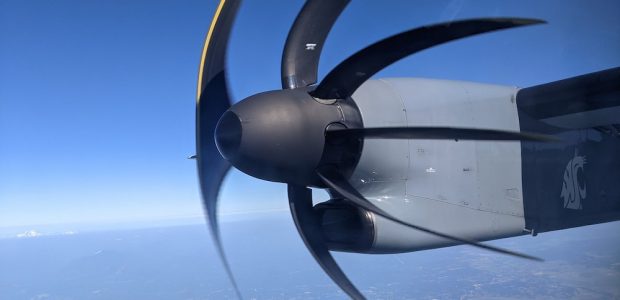Super Zoom Digicams
That’s what they call ’em, and they’re an interesting breed.
The rapid drop in price of entry level DSRLs (now as low as under $500 with kit lens) has rung the death knell for many digicam models. Pocket digicams are selling well, but models such as theCanon Pro1,Konica Minolta A1, and theSony 828, each of which were popular a couple of years ago because they offered lower cost than DSLRs, have now all bitten the dust.
They have been replaced by what are calledSuper Zoomdigicams. In this group are offerings from Panasonic, Fuji, Samsung and Sony. Each has a lens with from 10X – 12X zoom, typically 35 – 450mm or so. Sensors are in the 6 – 8MP range.
Having said that, this is not going to be a comparison tests. After looking over all of the current (mid- 2006) offerings, and weighing their pros and cons, I decided that one of this genre should be investigated, and after some research I ended up selecting theCanon Powershot S3 IS. Good arguments can be made for models from other of the camera makers, but this one seemed to appropriately marry high-quality images with both appealing handling and shooting features.

Ducks. Muskoka, Ontario. July, 2006
Canon S3 @ 432mm. ISO 80
_______________________________________________________________________
Why a Digicam?
These cameras do beg the question – why not get a DSLR? Models like theNikon D50,Canon 350DorPentax *ist Dall offer high image quality, interchangeable lenses, and reflex optical viewing. And they’re now as inexpensive as many digicams.
The answer lies in several areas. Here are the ones that make sense for me, even though I currently own several high-end several DSLRs, not to mention medium format gear.
–Silent operation.
There are some situations where the sound of a camera, any camera, is simply unacceptable. I spent several years working as a still photographer for the movie and TV industry. I would have paid anything 20 years ago for a camera that was completely silent. Even the sound of an M series Leica was too much on a sound stage during atake.
Today there are situations such as courtrooms, corporate meetings, theatrical productions and many more, where such a camera is the only way to get the shot.
–Extreme focal length and wide aperture.
A 35 – 432mm f/2.7 – f/3.5 lens for a 35mm camera would weigh a ton, and would cost an arm-and-a-leg. Yes, there are some long zooms for 35mm cameras, but none anywhere near this wide, or long, or fast. And when you consider that the S3’s lens, together with the camera itself will fit in a coat pocket, the appeal for some shooting applications is compelling.
–Articulated LCD viewing.
It’s hard, nay, impossible to beat a big SLR viewfinder for clarity and visibility. The tiny electronic viewfinder of a digicam has been compared to looking at a tiny TV screen at the end of a long tunnel, and that’s when being kind. But there is a real advantage when the camera also has an articulated LCD screen. This allows for the camera to be used at waist level, over the head, on the ground, and most importantly (for me at least), discretely, without having the camera up to my face, or held at arms length, the way so many digital cameras with fixed LCD screens need to be. That, in particular, is simply an unappealing way of doing photography; almost any kind of photography, let alone when one wishes to remain discrete.
_______________________________________________________________________
The Lens
The lens on this camera is a 12X zoom with a focal length of 6 – 72mm and an aperture of f/2.7 (wide end) to f/3.5 (long end). The focal length needs to be put into context with its 35mm equivalent; 36 – 432mm. This is a huge focal range, and a very fast aperture for such a long lens. If this lens had been designed for a 35mm full-frame camera it would weigh 25 lbs and cost more than most cars.
Of course the reason that such a wide ranging focal length, long reach, and wide aperture is possible is because the camera’s sensor is so small; 4.3 X 5.7mm, vs 24 X 36mm for full frame 35mm. This makes the focal length multiplier about 6X. Of course small sensors have disadvantages over larger ones, with the issue of noise being the most problematic. We’ll see shortly how much of a problem this really may be. Back to the lens for a moment though.
What is very appealing about its design is that when the camera turns on the lens extends an inch or so, and then hardly extends any further at all, even when at maximum telephoto. Almost all of the zooming is accomplished with internal element movements. If you’ve ever used other super-zoom digicams, whose lenses extend when zoomed as if they’d been given a heavy dose ofViagra,you’ll know what I mean. With this camera you’ll really appreciate how inconspicuous it is to shoot with an over-400mm equivalent lens that extends just 60mm from the body at maximum focal length.
Lilly Pads and Clouds. Muskoka, July, 2006
_______________________________________________________________________
Battery Topics
The Canon S3 uses 4 AA batteries. These can either be disposable akalines or the rechargeable NiMH type. The camera ships with 4 disposable batteries and no charger.
I regard this as an excellent design approach. The user has the ability to purchase any one of the numerous third party chargers and battery sets at low price, rather than having to use and purchase relatively more expensive proprietary batteries. And, when shooting in remote locations, especially when there is no electricity available, such as when hiking or camping, the use of alkaline AAs is a real plus. My one time using a set of disposable Alkaline AAs with the S3 produced a bit more than 100 frames, with the usual amount of reviewing, and a bit of shooting video. On the other hand a set of 2300 milliamp rechargeables last for many hundreds of shots, and a spare set and pocket-sized charger are cheap. I wish that more camera makers took this approach to battery power.
The worst aspect of the S3 with regard to power, is that there is no battery level meter. Only when the battery is within seconds of exhaustion do you get any warning. Does Sony have a patent lock on battery level reading? From its lack on this camera, you’d think so.
_______________________________________________________________________
The Lens and Autofocus
One of the frustrations of working with a digicam (at least for those used to an SLR) is that autofocus can be quite slow by comparison. Canon’s approach with the S3 (and this may well be used by other models and makers as well) is to have autofocus on all the time. I mean –all the time– even when the shutter release is not being half pressed.
The advantage of this approach is that the camera is almost alwayson focus, and so when you first touch the shutter release, and then follow-through with an exposure, the delay until focus is found and locked is quite minimal. This is a real plus in terms of responsiveness when compared to digicams that don’t start to autofocus until the shutter release is first pressed.
The downside, of course, is reduced battery life. But, this appears to be academic because battery life with the S3 is well within the norm for this type and cameras, and most users will find that a set of rechargeable AAs last all day. It needs to be mentioned as well that because Canon uses their ultrasonic focusing motor system there is no audible penalty for having full-time autofocus. It is essentially silent.
_______________________________________________________________________
Image Stabilization
Canon has built Image Stabilization into the S3’s lens; essentually the same type as in their DSLR lenses. It provides as much as a 3 stop increase in handholdability. It has four modes;Off, Continuous, Shoot OnlyandPanning.
These are fairly self explanatory. Some review sites have reported thatContinuousseems to provide slightly better stabilization overShoot Only(which only becomes active at the moment of exposure). I haven’t tested this, or seen any significant difference between the modes, but I’ll take their word for it. I leave mine inContinuousmode simply because it stabilizes the image in the viewfinder or LCD, which itself is well worthwhile at long focal lengths.
Panninglimits stabilization to just the vertical plane, allowing for, guess what? Panning! This is slightly different than what’s found on Canon’s IS-equipped 35mm lenses, where inMode 2the lens automatically detects the axis of motion. The S3 will only stabilize on the horizontal axis.
On a parenthetical note regarding stabilization and super zoom cameras – don’t leave home without one. Stabilization, I mean. When shooting with lenses like the one on theSamsung Pro 815, which racks out to 420mm (a smidge longer than the S3), not having Stabilization is hugely problematic. Except in bright daylight or at high ISO settings the lack of stabilization is, to my mind at least, an absolute must in this type of camera.
_______________________________________________________________________
Image Size
The sensor in the Canon S3 is a 1/2.3" CCD, offering 6 Megapixel resolution. In its highest resolution mode that’s 2816 x 2112 pixels, or stated another way, about a 9" X 12" image size on paper at 240ppi, fitting nicely on an A3 or 11X17" print.
Since many of the mainstream DSLRs are still 6MP, though some of the consumer camera marketplace has moved up to 8MP, 10MP and12MP, clearly many users find this size satisfactory for their needs. Given the intended market for this type of camera I would have to agree.
The real area where a 6MP sensor gives ground is when it comes to cropping. If you are lucky (or talented enough) to frame the shot so that little or no cropping is needed, most people will find a 6MP sensor camera adequate for their needs. But, it’s when cropping is needed that larger sensors have a significant advantage, because they allow for cropping and still provide a usable file size.
This is one way in which the S3 can hold its own though, because with a lens that goes out to 432mm equivalent, it will usually be possible to obtain the framing needed for a particular shot.
_______________________________________________________________________
Image Quality
Image quality assessment is always a relative and a subjective thing. There’s little point in comparing digicams and DSLRs. And since some of the better digicam review sites have sample images of resolution charts and the like, there’s also little point in duplicating that effort here.
Subjectively then, the Canon S3 produces files at ISO 80 and 100 that are reasonably clean, and with high resolution. There’s little to quibble about at ISO 80 and 100, but the darker are of many images will see a bit of coarseness that isn’t usually visible on cameras with larger sensors. At higher ISOs Canon’s in-camera noise reduction starts to create a somewhatsmoothed overappearance. Hard to describe, but visible to those that are familiar with it.
At ISO 200 noise starts to become visible, though can be tolerated (at least by me). At ISO 400 is definitely there, and will need to be fixed with a good third party noise reduction program likeNoise NinjaorNoiseWare Pro. ISO 800 is also available, but without noise reduction in post, is almost unusable. With NR the nastys will be gone, but so will a lot of fine detail.
More of an issue to my mind is chromatic aberration. Since I haven’t looked at digicams in a couple of years I have not been following the trend in beating this issue, but if the S3 is any example, there hasn’t been too much progress.

Detail of "Ducks" seen above.
Note fringing around the highlights on its head
Red fringing is definitely visible at maximum focal length, though it reduces as focal length decreases, and is just about gone below 300mm equivalent. Blooming is also quite visible on specular highlights.
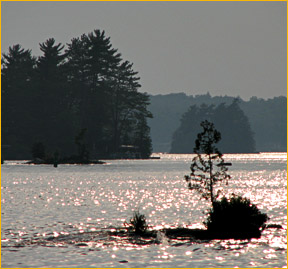
Real issues, but not deal breakers. Some in the online community fretted publicly a few years ago over the CA exhibited by theSony F828, the first of the 8MP digicams, and took nasty swipes at my review, in which I noted it, but stated that it shouldn’t be a gating factor in choosing the camera. Curiously, the CA seen on the Canon S3 looks just about as bad to my eye, yet I haven’t seen any of the vituperativness seen last time this was discussed. It would seem that either people’s standards have changed, or they don’t care to criticize Canon the way they did Sony at the time.
In any event, the fringing is easily dealt with using the tools available in Photoshop, though the blooming is less easily dealt with.
_______________________________________________________________________
Focal Length Pros and Cons

Rain Drops. Lake Muskoka, July 2006
Small sensor cameras provide both good news and bad when it comes to focal length. Though its convenient to describe and think about the focal length range of a camera such as the Canon S3 in full frame 35mm terms, it needs to be borne in mind that the actual focal length of the zoom, described as 35 – 432mm, is actually 6 – 72mm.
The good news of this is that depth of field at medium to wide focal lengths is quite extreme. For example, the photograph above as taken at 14.5mm ( 90mm equivalent). Though the perspective is that which one would get with a 90mm lens, the depth of field is that of an ultra-wide in 35mm terms. In the photograph above (taken at f/3.5) everything is in focus from the nearest raindrop to the distant shoreline, while the perspective isnormal.
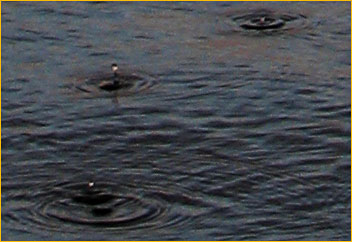
100% enlargement of the above image
The inverse though is also true. It is difficult to achieve selective focus when the longest focal length is an actual 72mm. Except at the long end of the zoom range one is always struggling to achieve selective focus, and at mid to wide focal lengths it’s essentially impossible. Tis the nature of the beast.
_______________________________________________________________________
Let’s go to the Movies
One of the enjoyable capabilities of the Canon S3, and the one that help me choose it over other contenders in this category, is that it is capable of shooting full resolution movies as well as 6MP stills, accessed directly via a dedicated movie-mode button. Video mode resolution (SD) is 640 X 480 at 30FPS. Files generated are .AVI, at the rate of about 2MB / sec, so a 1GB card can hold a bit over 7 minutes of video.
As long as a high speed card is used (think Sandisk Extreme III), there is no limit to shooting length, other than the size of the card. In a very well thought-out design approach Canon allows one to shoot in movie mode at any time, using a dedicated button near the eyepiece. This is regardless of the still shooting mode that the camera may be set to. It is even possible to shoot a still photograph in full 6MP mode while filming, though there is a momentary flicker in the video recorded.
How good is the video quality? Subjectively, when edited together with footage taken with various video cameras, one is unable to easily tell which was taken with the S3 and which with a dedicated video camera. Compression artifacts are quite a bit lower than seen on many competitive models, leading to higher quality footage. Therefore, other than being limited to about 7 minutes per Gig of card space, there is little disadvantage to shooting video with the S3 over the use of a video camera for most amateur uses. Indeed being able to work directly with data files rather than having to transfer from tape to computer before editing is a time-saving bonus.
Now, before jumping into your email program to tell me that there’s no way that a digicam can shoot decent video, think about the likely application. Home movies. My family has little kids, uncles, aunts, nephews and nieces. There are family gatherings, birthdays, summer vacations and the like. No, I wouldn’t shoot a segment forThe Video Journalwith the S3, but I’m more than pleased to set aside my video camera these days and simply use the S3 for shooting family snapshots and videos, all with the same camera at the same time. Pop intoIMoviefor some editing, and quick and fun videos are the result.
In other words –fun, something that a camera like this is all about.
Of course the S3 isn’t the only current digicam that can shoot 640 X 480 at 30FPS. But, it is among a very small number that can do so in high quality, while retaining the ability to zoom, and with a dedicated Movie button which can be activated at any time, in any still mode.
One additional advantage to a still camera that can also shoot video was pointed out to me by professional film maker Chris Sanderson. The S3 looks like a still camera, not a video camera. There are times and places where shooting stills is allowed, but not video. We encountered this at the shipbreaking yards in Bangladesh a couple of years ago. This Canon camera would have been ideal for that type of situation.
_______________________________________________________________________
Audio
The S3 has a pair of stereo microphones built in, which are used in shooting videos. But they also can be used to add audio notes (in stereo) to any still image at any time after the shot is taken. These can be up to one minute in length.
The camera can also be used as a stand-alone digital audio recorder, able to record 44 kHz stereo up the maximum size of the card (or two hours), whichever comes first. Unfortunately there is no external mic input, so sound quality is limited to that of the built in mics. Great for recording interviews, presentations and lectures though.
_______________________________________________________________________
Special Effects
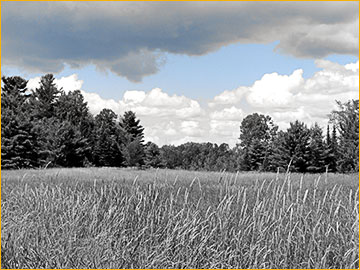
Like most digicams the Canon S3 is loaded with special effects modes, some useful and some gimmicky. One that I found full of possibilities, and fun to experiment with, allows you to choose one color (or colour range) and have everything else in the shot B&W. Above and below are two examples.
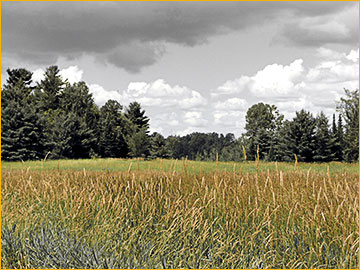
_______________________________________________________________________
My Colors
Becuse there is no raw mode all image processing is done by the camera to produce essentially finished JPGs. I found the camera’s default settings to be somewhat exagerated for my taste, and so through creating a customMy Colormode I was able to produce a series of settings which I then applied to all shoting modes.
My preference settings are, Contrast -2, Sharpness -1, Saturation -1, Skin Tone -1.
_______________________________________________________________________
The Kitchen Sink
There are so many additional features in the Canon S3 not yet discussed here that it would take 2 – 3 times the space to cover them all. Here’s a quick, and by no means exhaustive list of some of the more pertinent ones…
– high speed shooting mode, at 2.3 FPS
– built-in flash pop-up flash, with second curtain sync if required
– speaker for audio playback (still and video)
– variable speed electric zooming
– dual display modes; with any combination of display items (such as live histogram). These are settable separately for both the LCD and the viewfinder. (This provides a total of four customizable screen set-ups.
– a fully articulated LCD, able to rotate to almost any position
– Macro and Super Macro modes, the latter allowing focusing as close as the front element of the lens
– Each shooting mode can have its settings saved, and there is a Custom mode which records and stores all of the camera’s settings
_______________________________________________________________________
The Negative Side of the Ledger
I’ve been quite positive about the S3 thus far. I find its user interface to be well designed, and the fit and finish of the camera are excellent as well – especially given the value received for some $500. But, there are a few things that could stand improvement.
For example, there is no battery meter. When the batteries die, the camera simply shuts down, and a brief message flashes on the screen telling you to replace the batteries.
While the S3 has the ability to display a live histogram, one can not also display the exposure compensation tool at the same time. (Who on the engineering team thoughtthatwas a good idea?). There also isn’t any form of flashing highlight overexposure warning when shooting, only on image review. In combination these make setting optimum exposure more problematic than it should be.
The Canon S3’s worst flaw is that it doesn’t offer raw recording, only JPG. What a shame! It’s such a frustration to have to live with fully baked images in sRGB and 8 bit mode, when it would have been so easy for Canon to provide a raw alternative. This is made especially obvious since this is very much aphotographer‘s camera. It is clearly designed for the advanced user, since it offers a huge number of features and capabilities. The lack of a raw mode is therefore simply a mystery.
I would have preferred a manual zoom to the variable speed electronic zoom offered by the S3. Given how short the lens barrel is I can see though why it is not offered in this model. In considering the trade off I prefer the small size provided by this design over the longer physical length of the lens that a manual zoom approach would have likely required.
_______________________________________________________________________
Conclusion
The Canon S3’s strength lies in its small size and long zoom reach, combined with Image Stabilization. While not a pocket digicam, it is coat pocket size, and therefore quite inconspicuous and portable. The use of AA batteries adds to the versatility, and a very high quality movie mode with a dedicated activation button are icing on the cake. At under US $500 retail this camera is a relative bargain.
No, it’s not an alternative to the current generation of sub $500 DSLRs, but given its features it is capable of adding some interesting new capabilities to many a photographer’s bag of tricks.
As for the question asked in this review’s subtitle – of whether the Canon S3 isthe leader of the pack– it might well be at the moment, but with Photokina just around the corner, and new contenders like the Panasonic FZ-50 breathing down its neck, its time wearing that crown may well be limited.
July, 2006
You May Also Enjoy...
Of the complexities of image quality part II
FacebookTweet Introduction In the previous part of this series, we looked at the behavior of the image sensor itself, at sensor technology and size and

